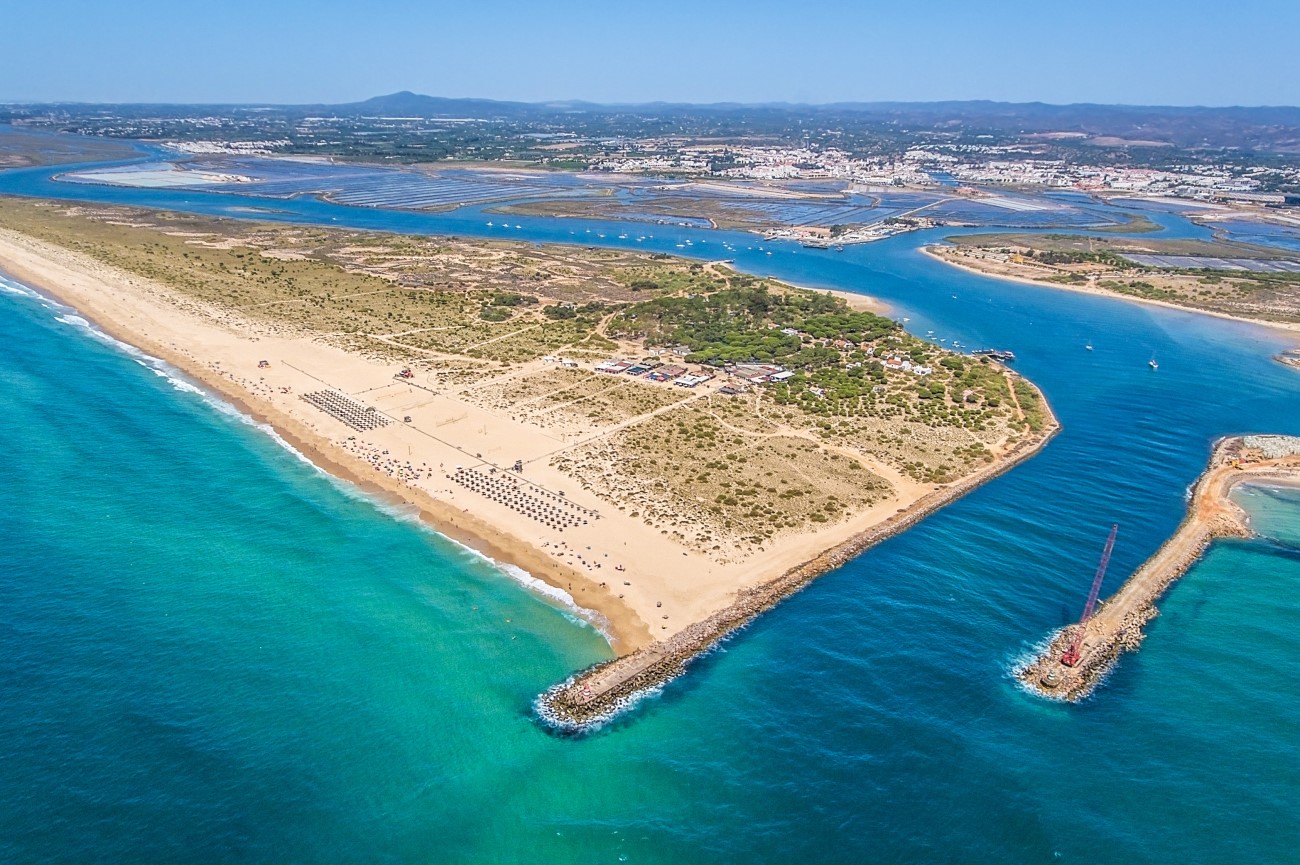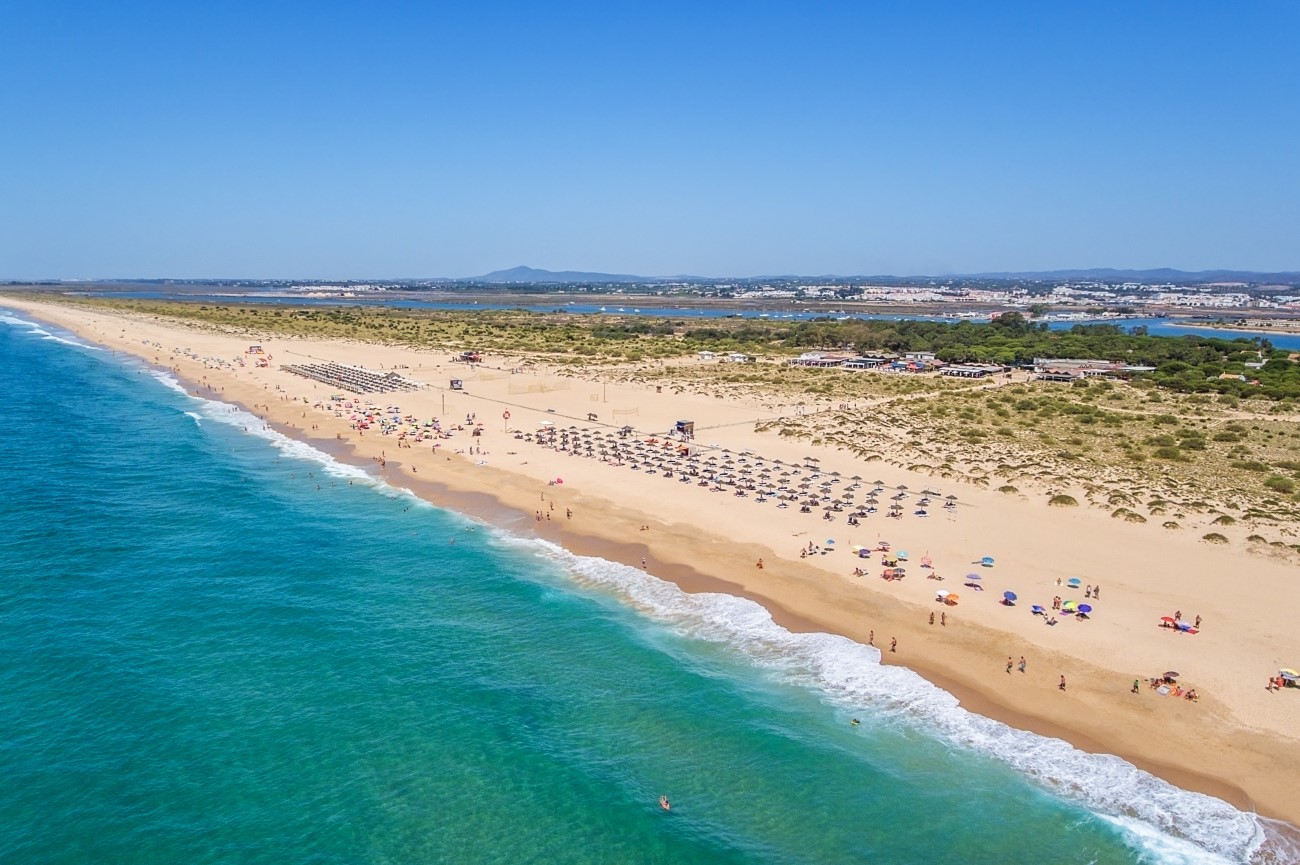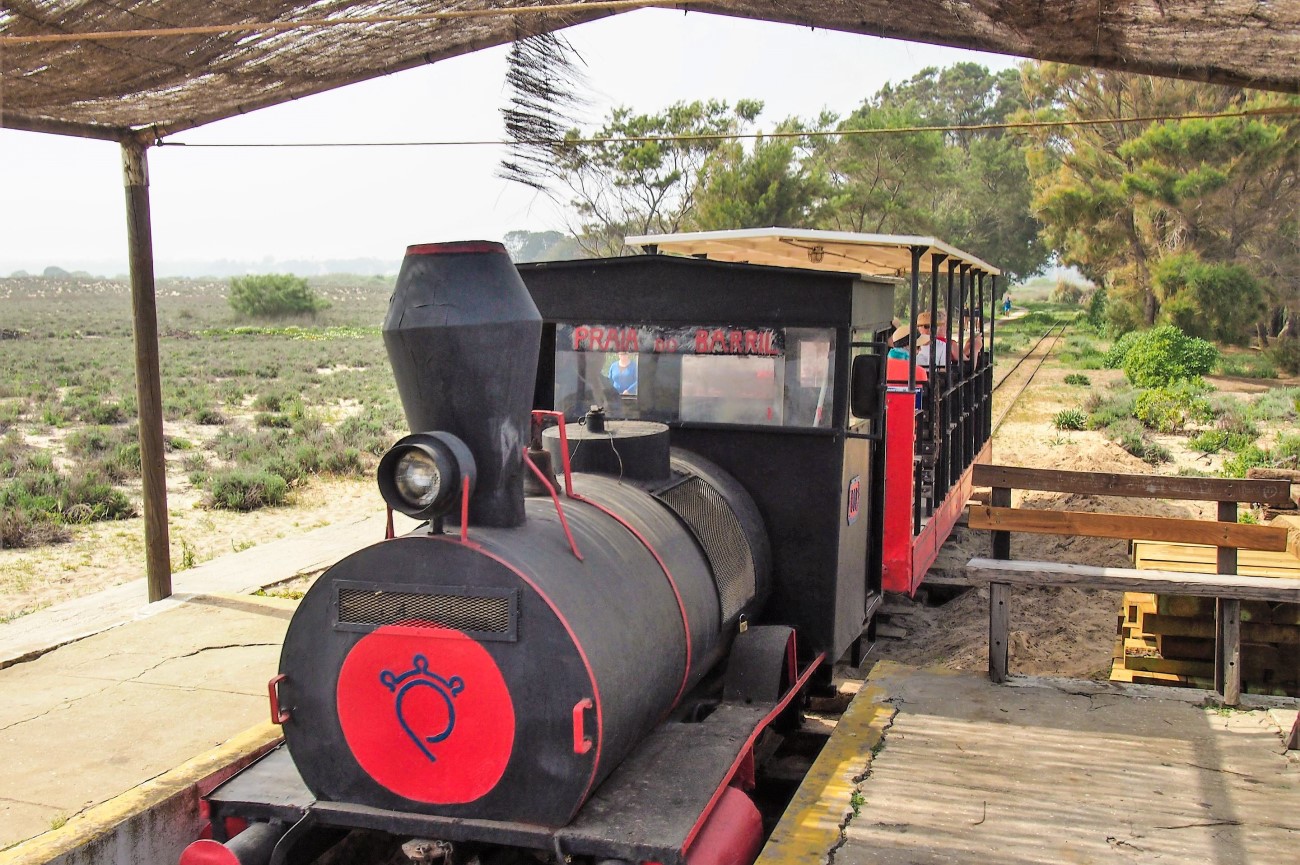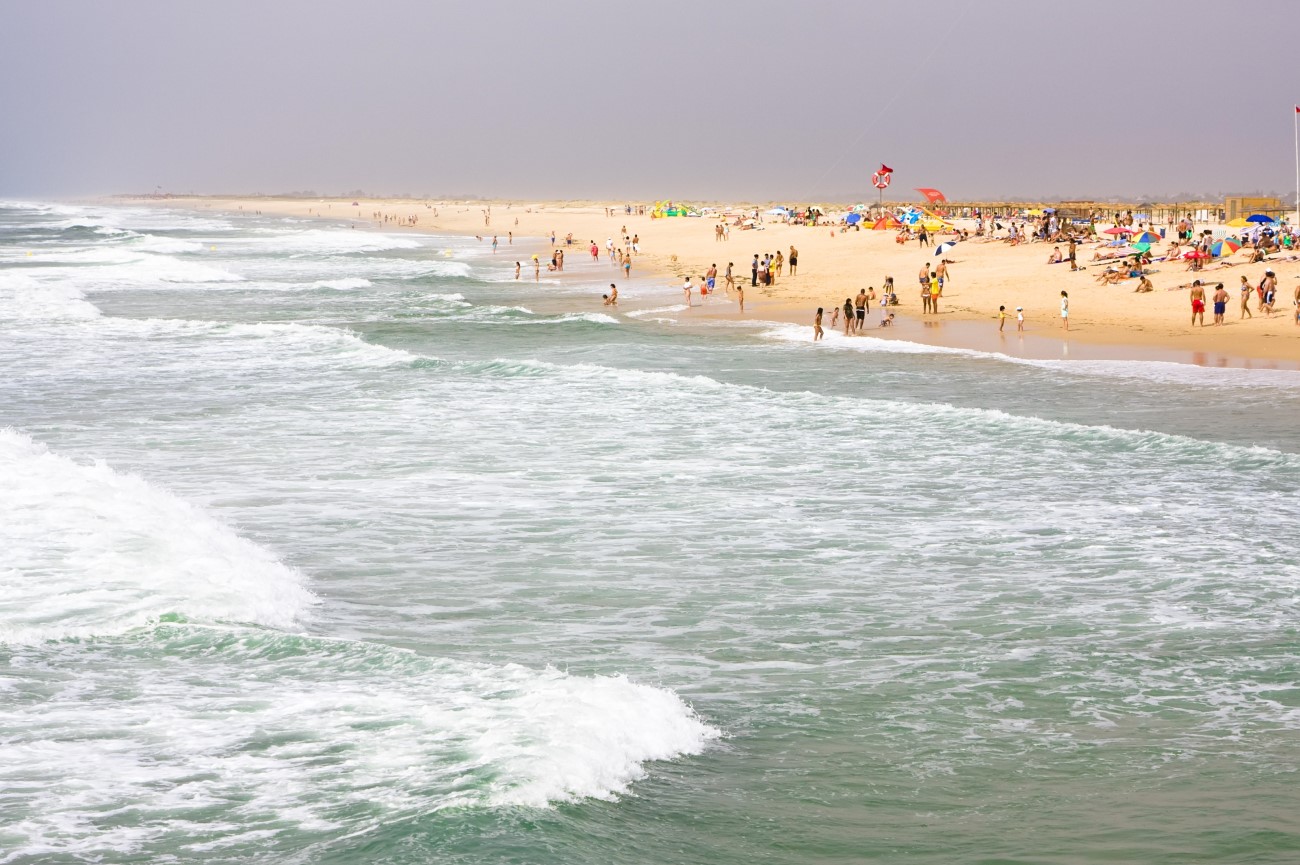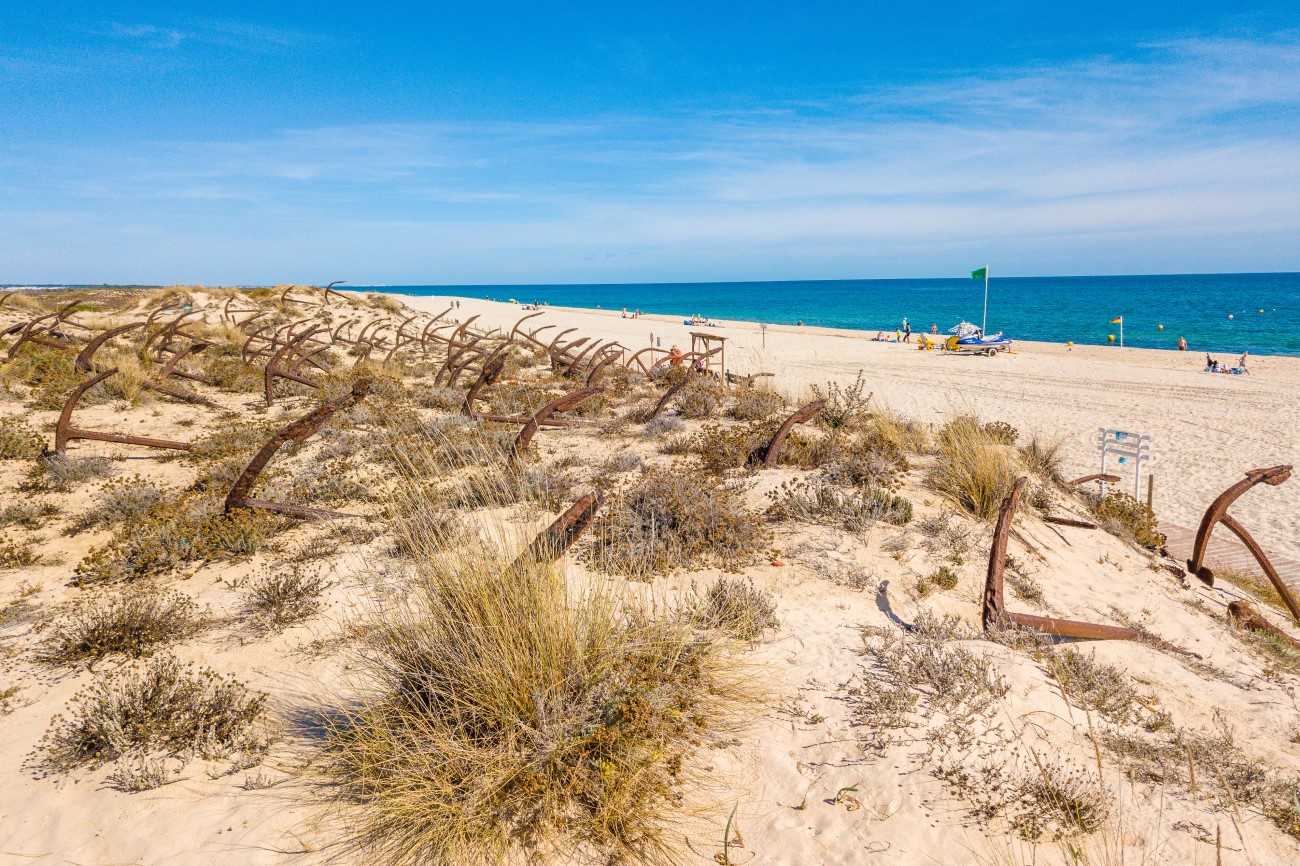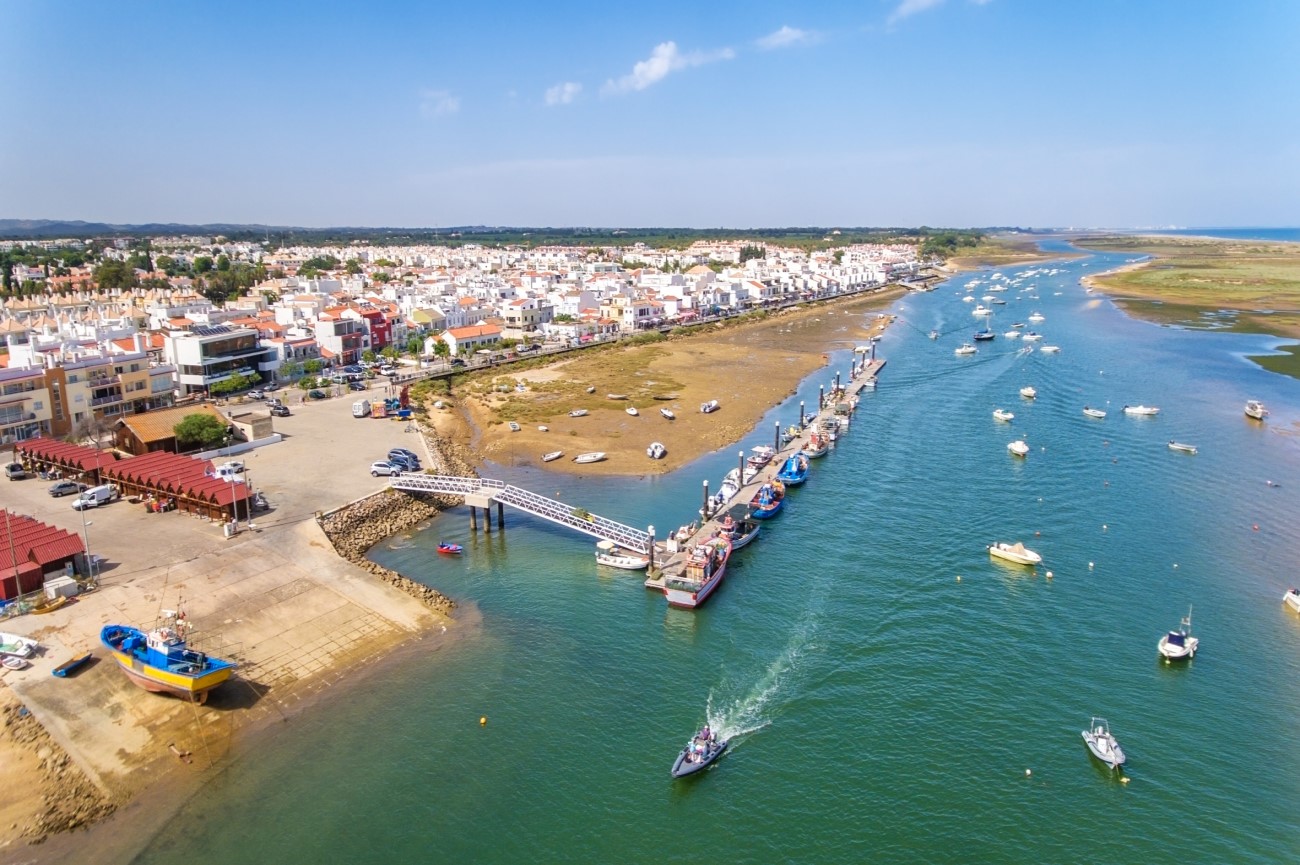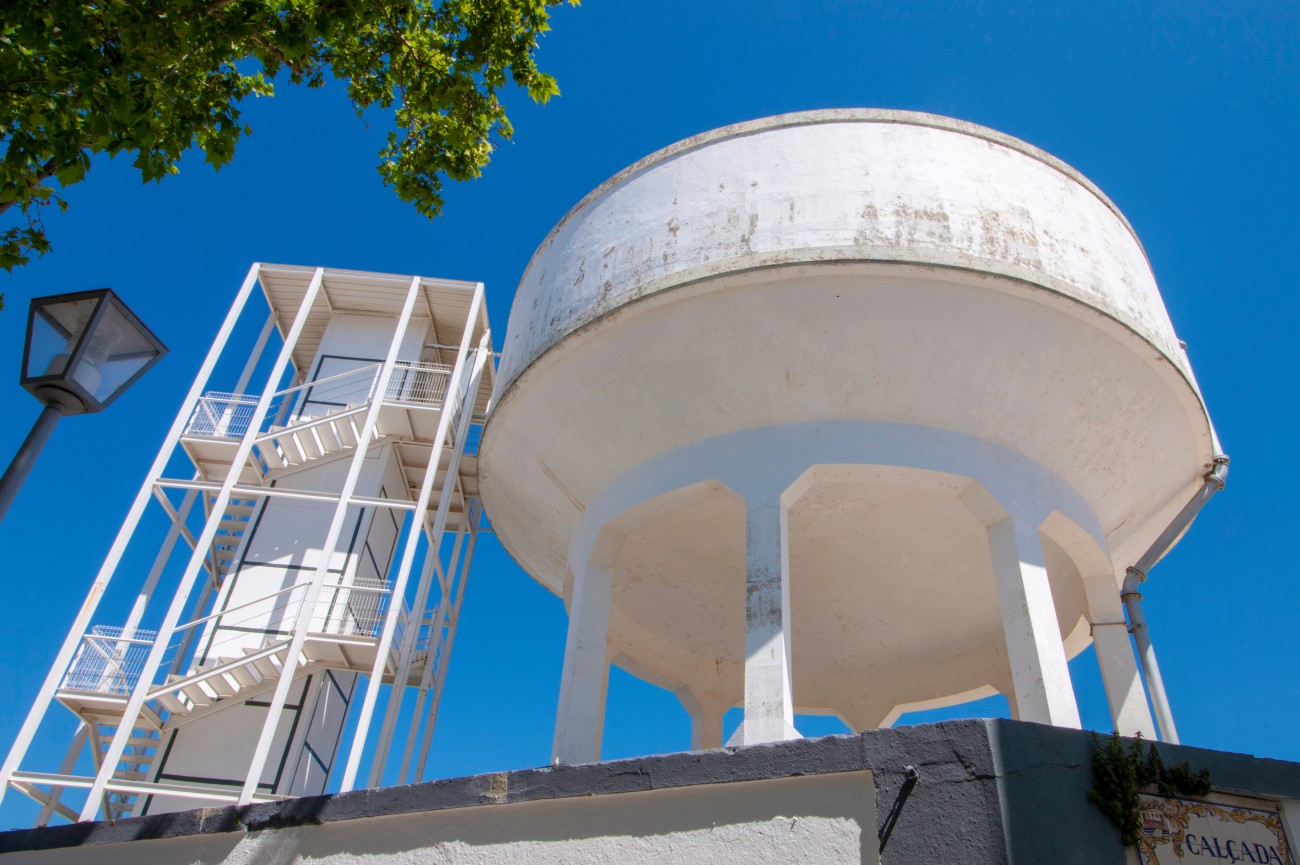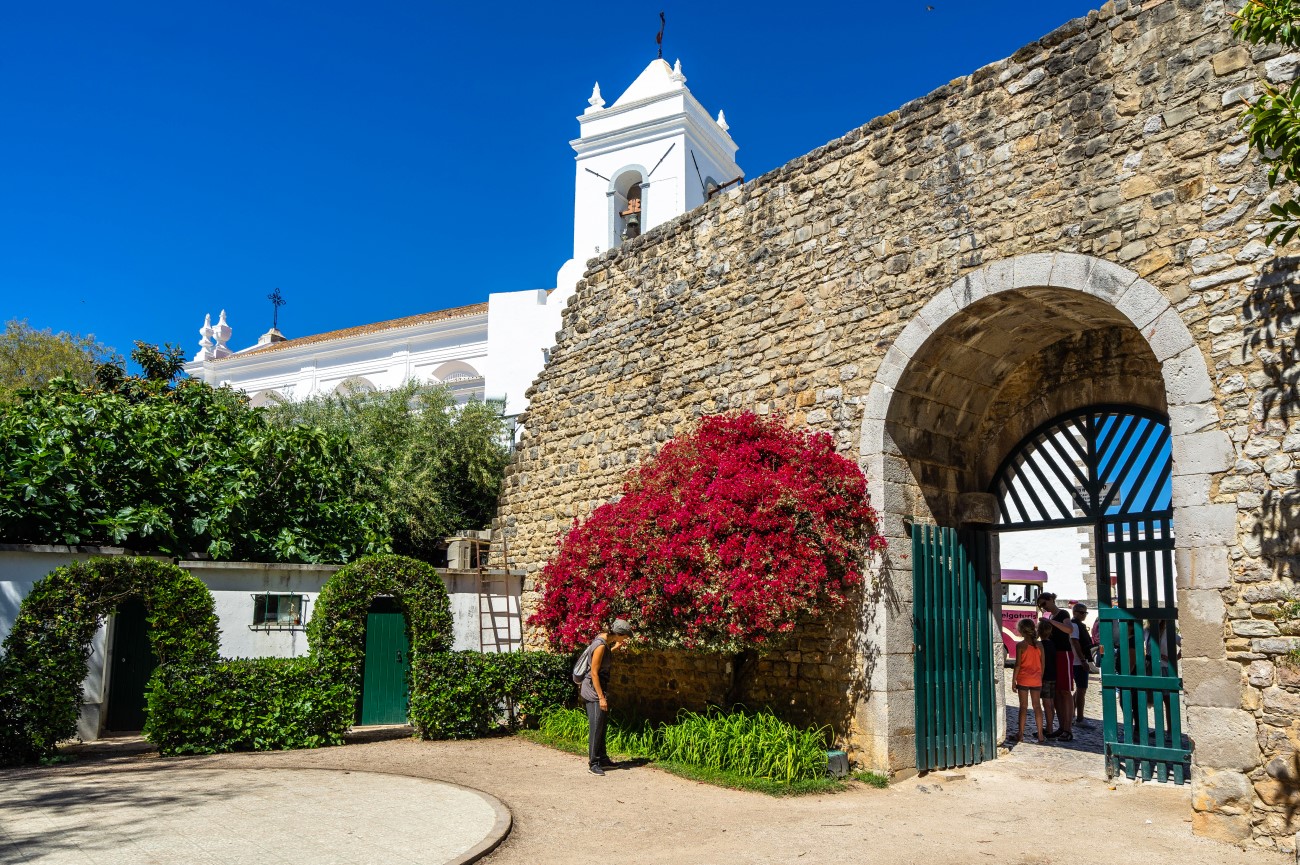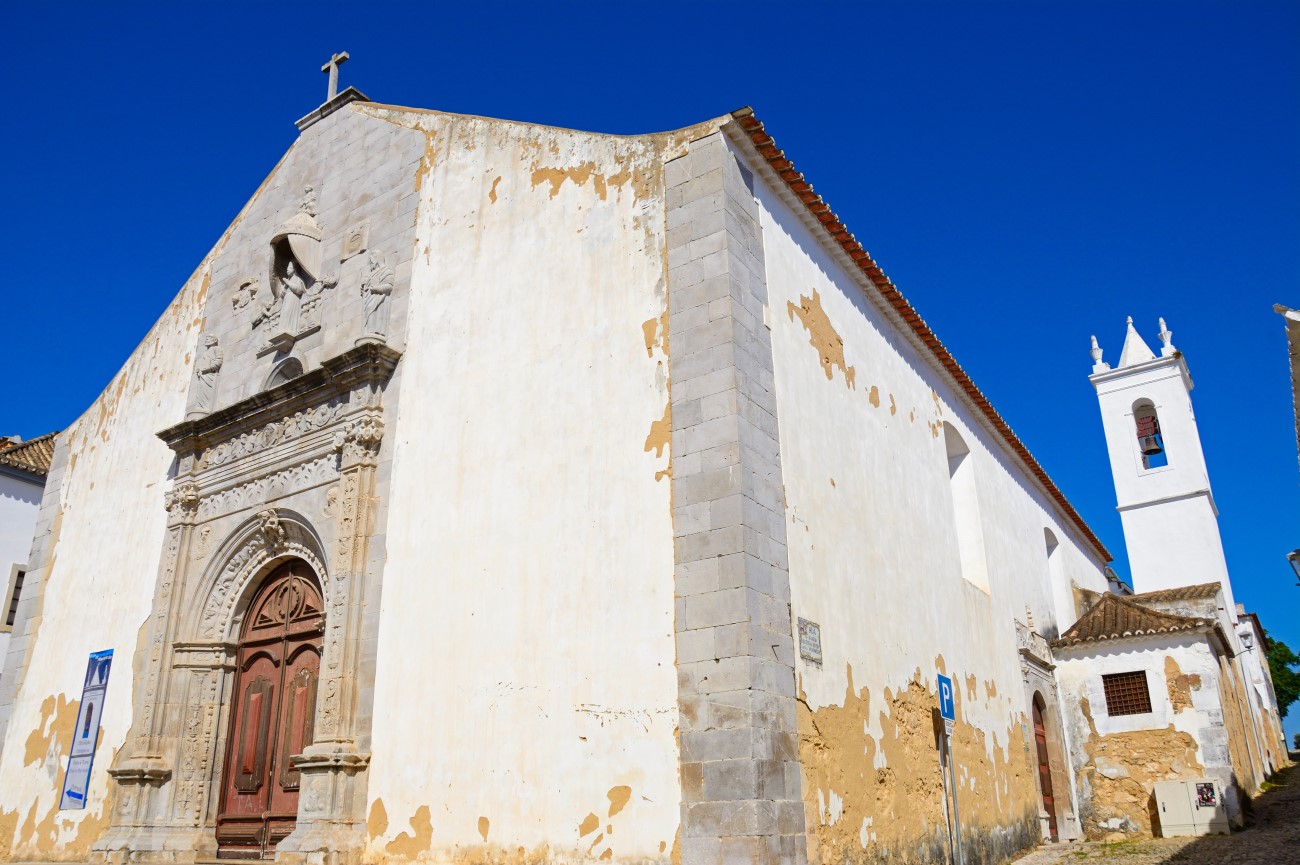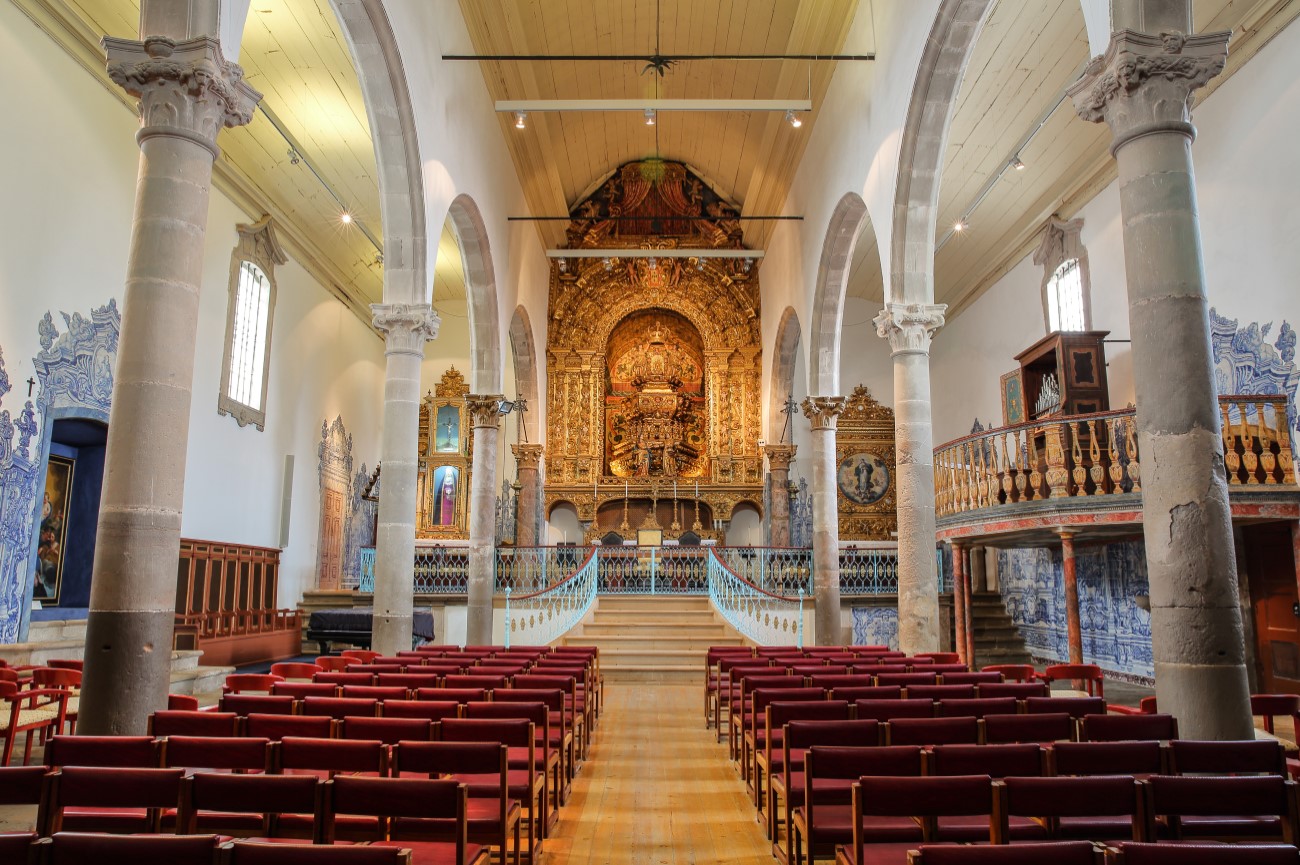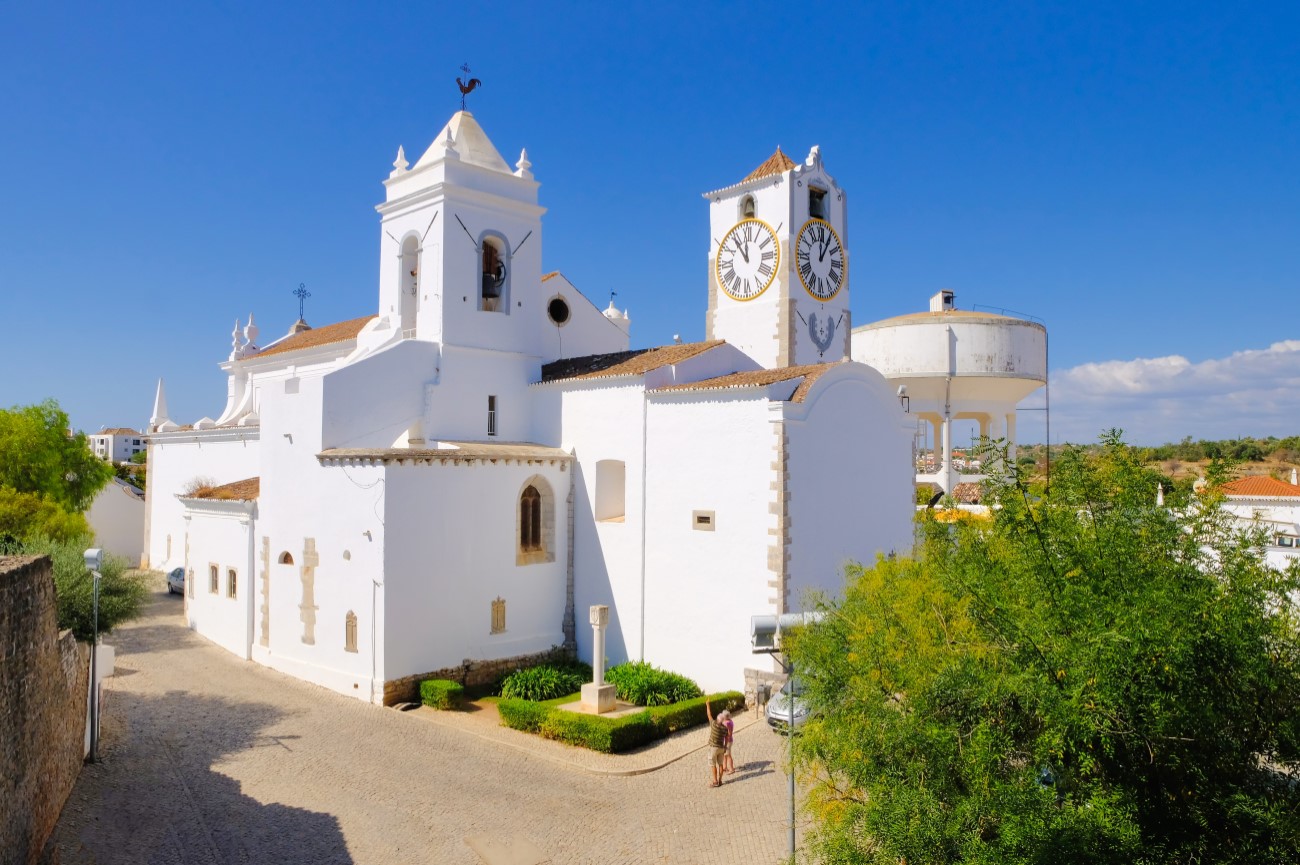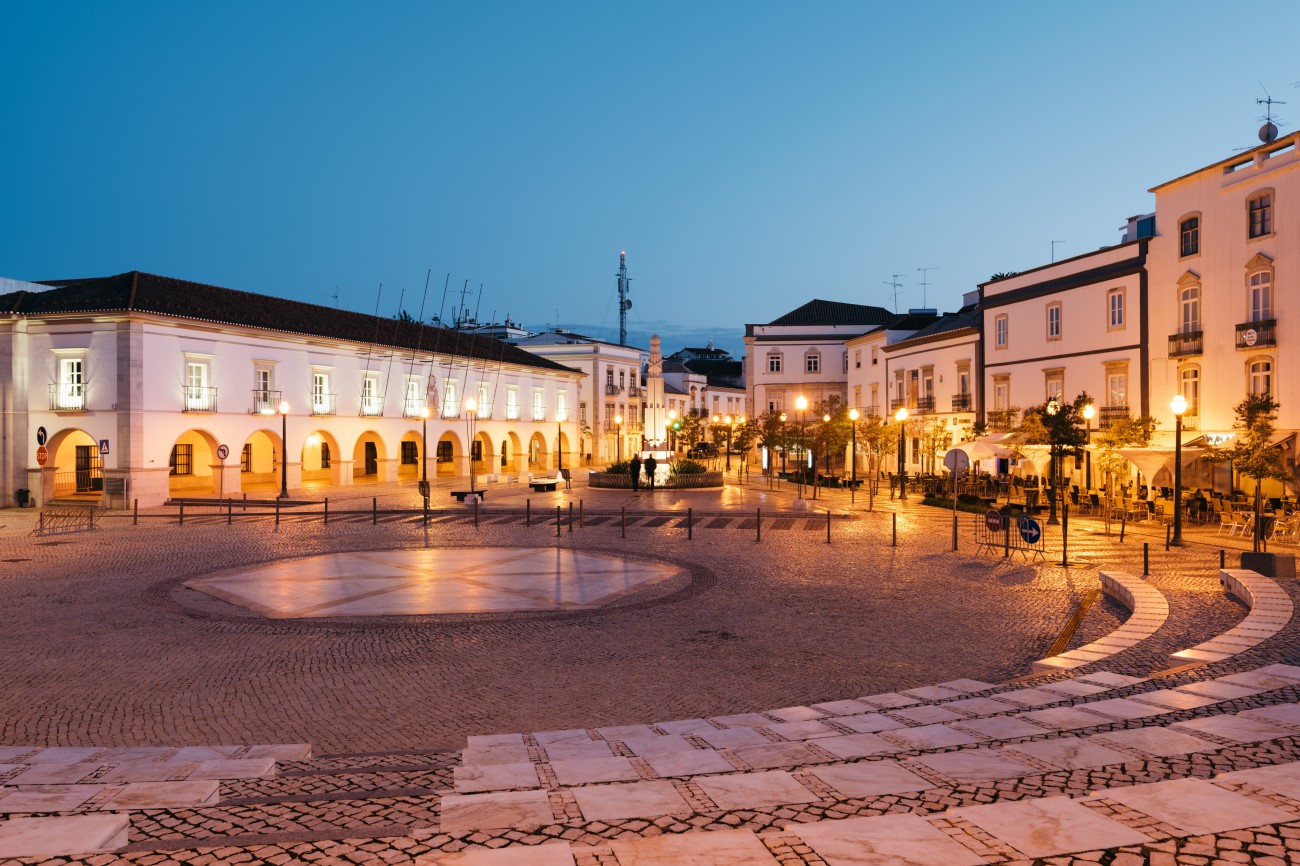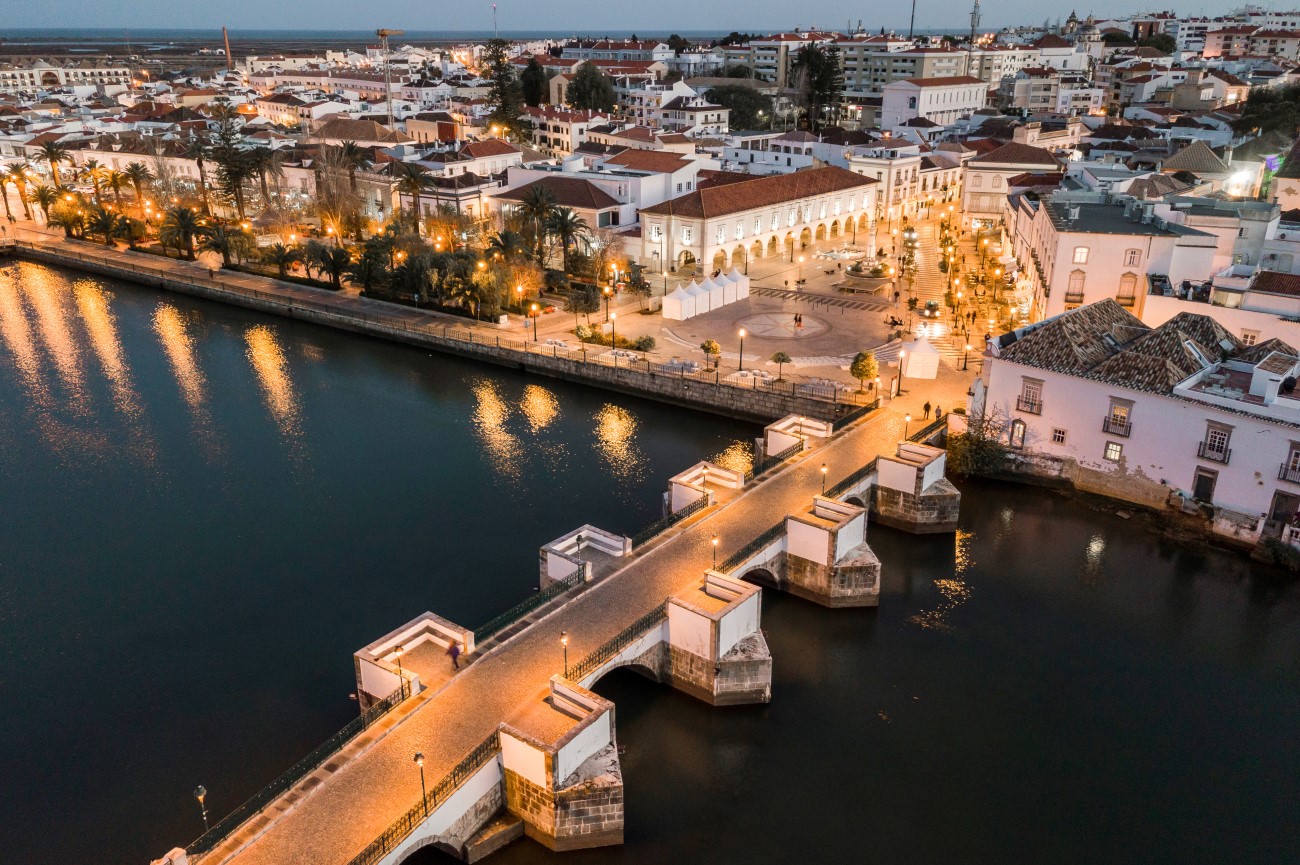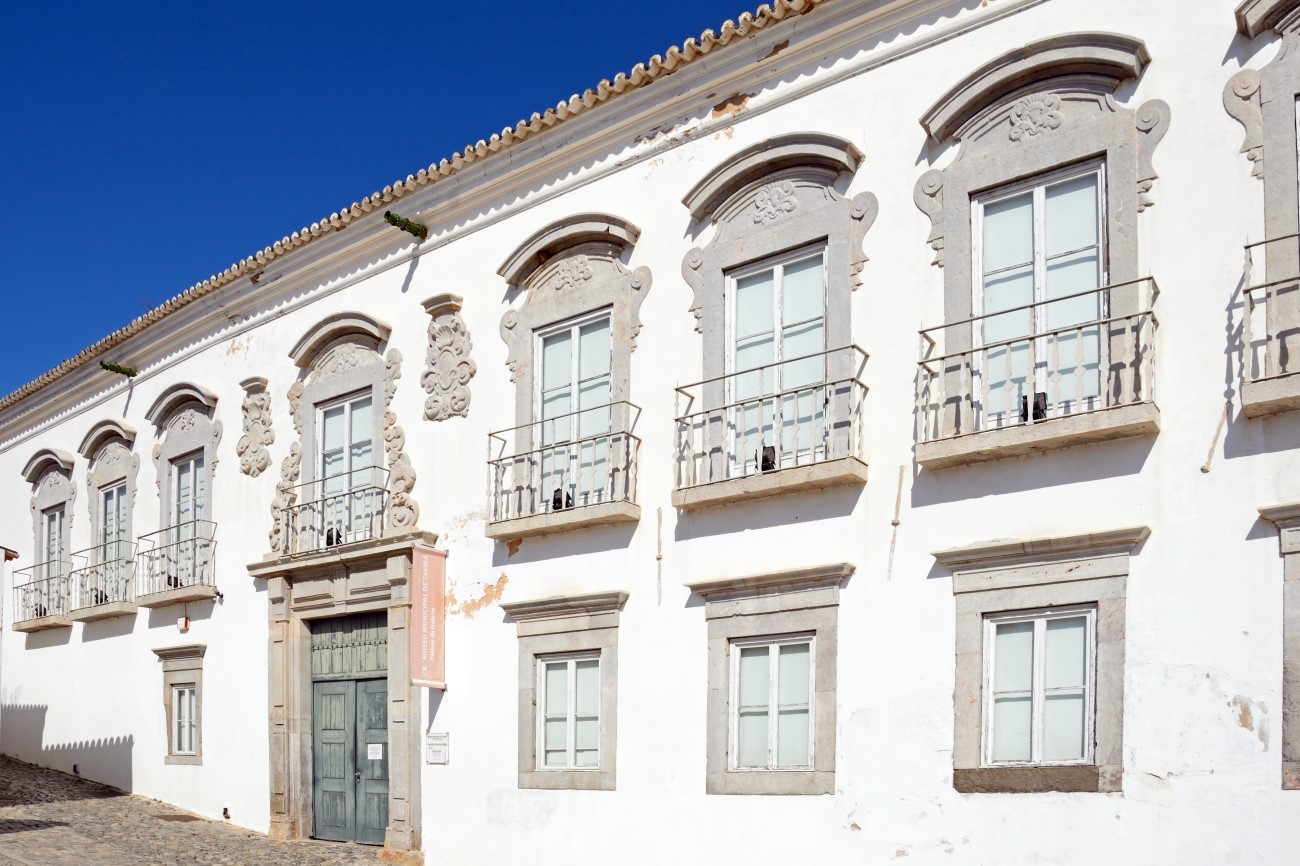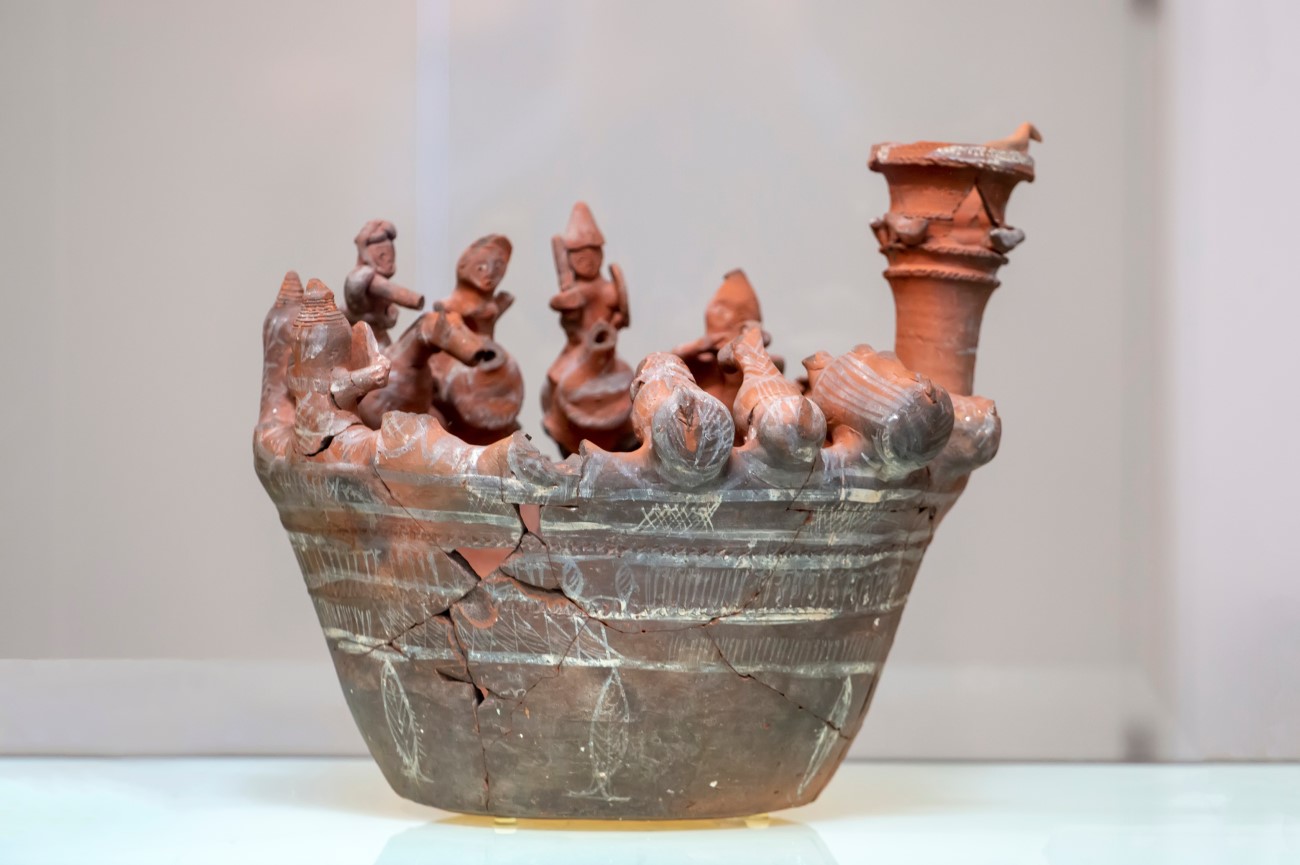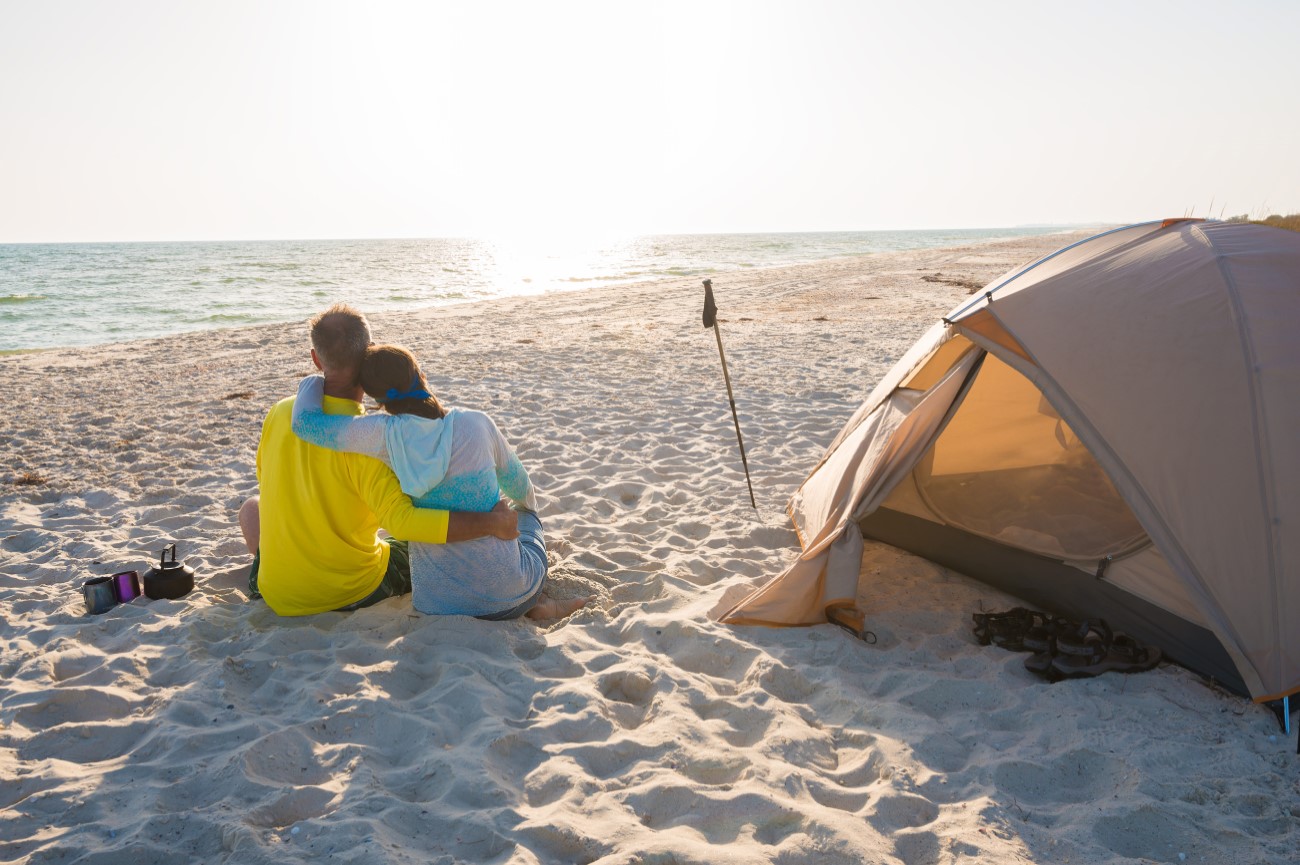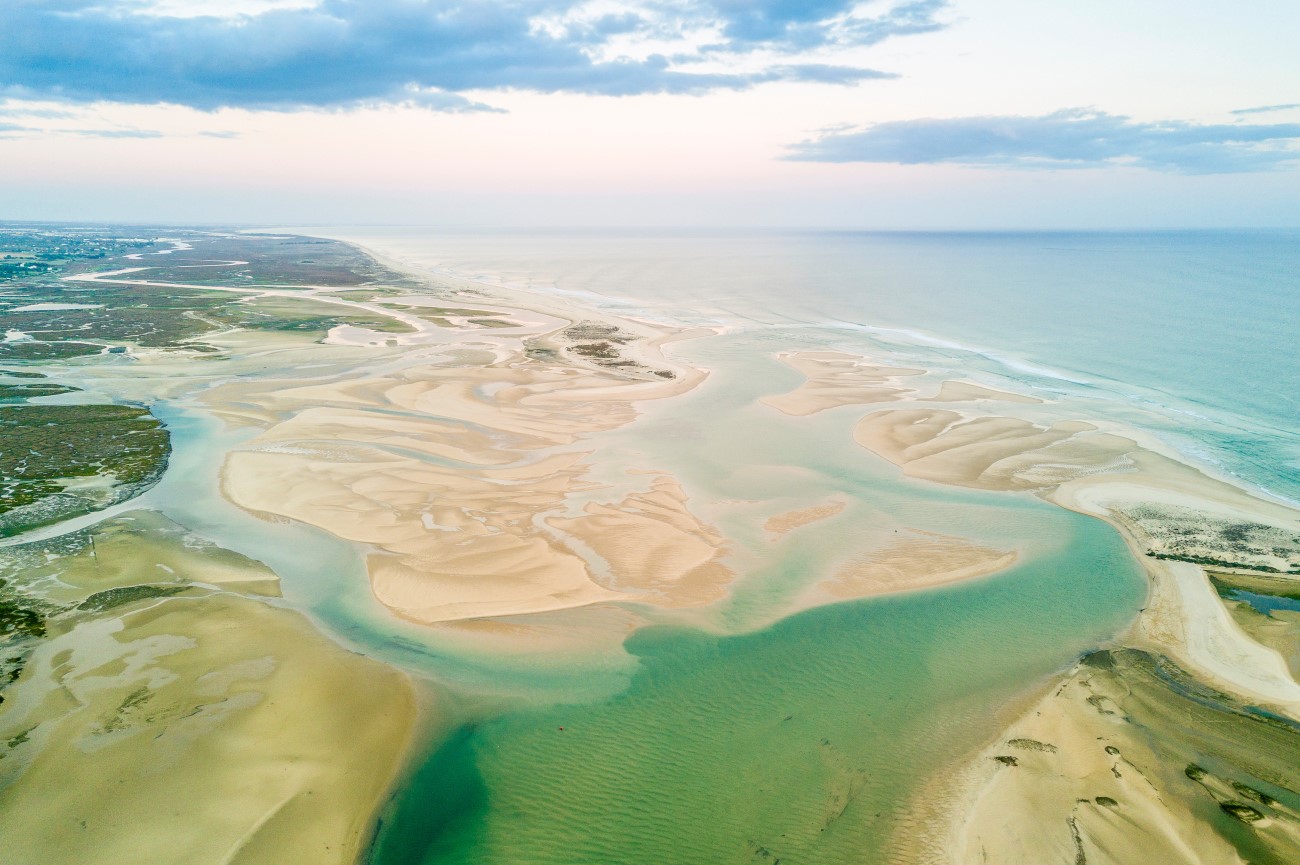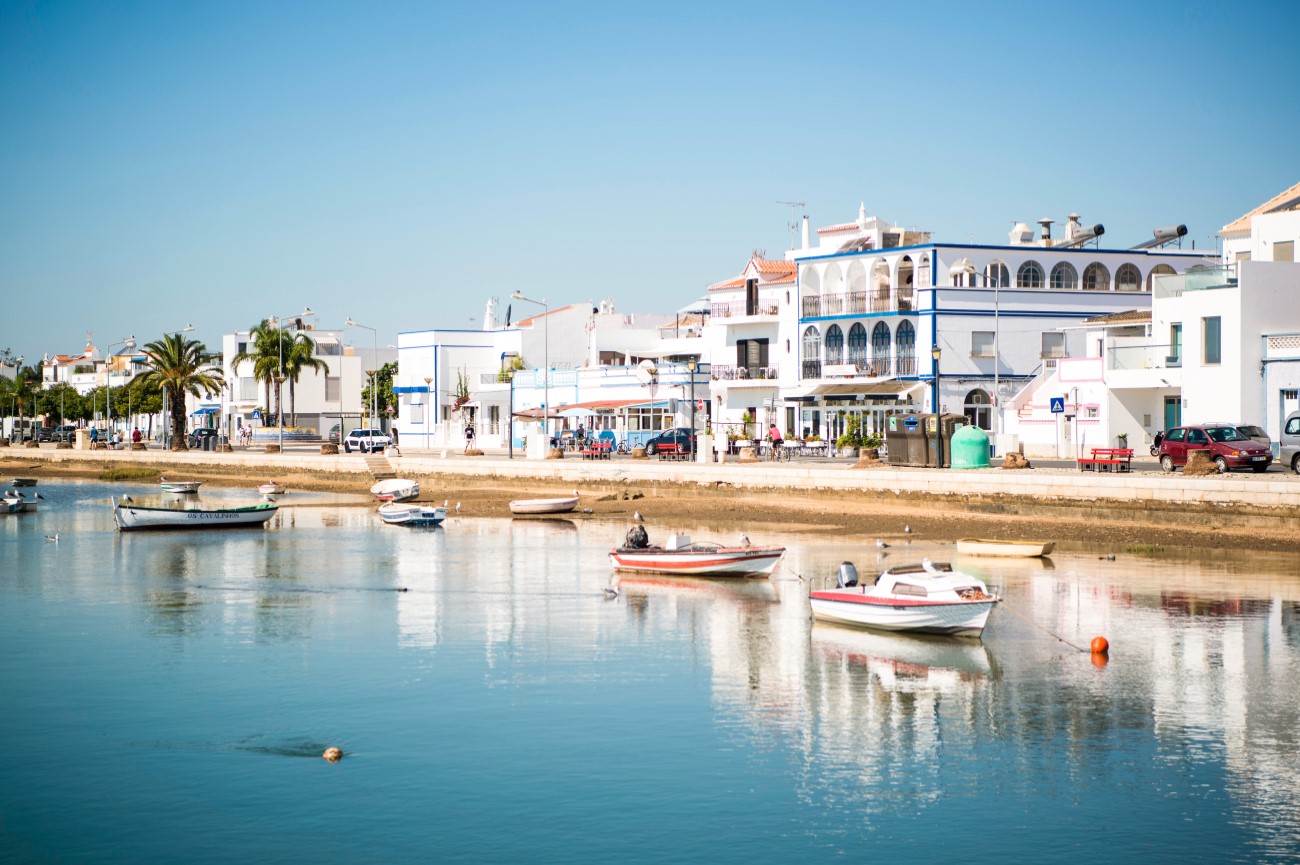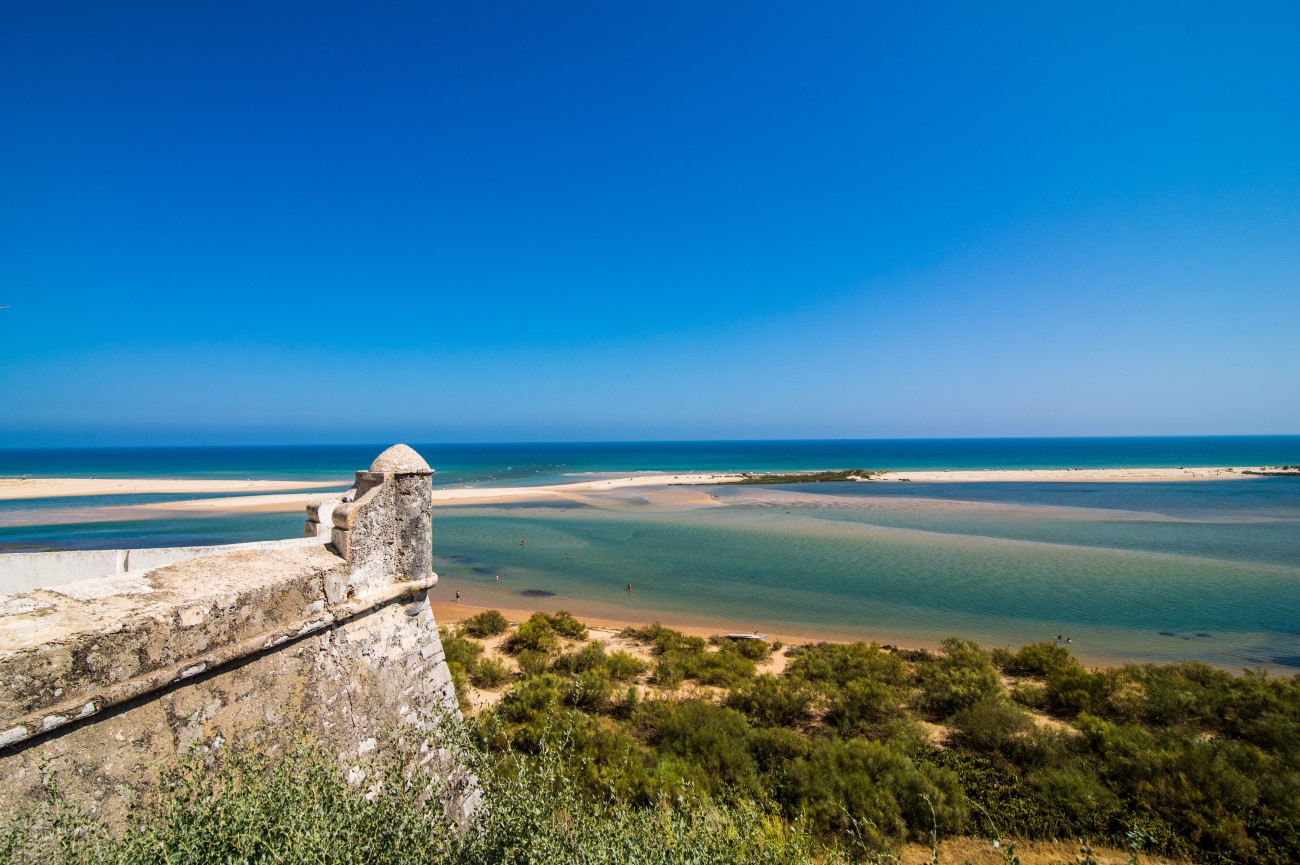A Visitor's Guide to Tavira
With origins that date back to the Bronze Age, Tavira is one of the most beautiful towns in the Algarve.
Located on the banks of the Gilão River and just 40 minutes from the Faro airport, it is the perfect travel destination!
From beaches to historic sites and museums, Tavira has everything you could hope for in a vacation.
What to do in Tavira
The eastern Algarve may not be as popular with tourists as the western and central areas, but there is still plenty to do and see. Here are some of our top picks for things you can do in Tavira!
Tavira Beach
The beaches in Tavira are spread across two islands: Ilha de Tavira and
Ilha de Cabanas. Most beaches, however, are found on Ilha de Tavira.
These beaches include Praia de Tavira, Praia da Terra Estreita, Praia do
Barril and Praia do Homem Nú. Ilha de Cabanas is a smaller island and
contains only one beach, Praia de Cabanas.
Praia de Tavira
Closest to town, this is a very popular,
family-friendly beach. This means, of course, that it can get rather
crowded at times. But, given that the beach stretches for 7km, a short
walk down the coast should allow you to find a little area all to
yourself.
The water here is remarkably clear but it can be a
little chilly, even in the summer so be prepared for a “refreshing”
experience!
To get to this beach you will need to take a ferry.
During the summer months, you can take a 20-minute ride from the center
of Tavira or you can ride the year-round ferry that departs from Cais
das Quatro Águas pier. That ride is a little bit shorter at around 10
minutes. If you aren’t willing to wait in line and want to hit the sand a
little faster, water taxis are also an option. However you choose to
arrive on the island, it is a beautiful trip as you will be able to see
the lagoons and mudflats of the Ria Formosa Nature Park.
Once
you arrive, on the beach, you will find all the amenities you could ever
want. From May to December, you will have your pick from a number of
cafes and restaurants when you need a little break from the sun and
surf.
Praia da Terra Estreita
This the quietest beach on Ilha de Tavira. There is no direct ferry to this beach so if you are planning to make a visit, you will have to travel by boat from the nearby fishing town of Santa Luzia.
Like the other Tavira beaches, this beach boasts soft sand and the clear blue water of the Atlantic. This beach is clean and does have shallow water access, appropriate for people making the visit with children.
If you looking for something more relaxed and outside the typical tourist experience, this is the beach for you. But just because there aren’t so many people, it doesn’t mean you won’t be able to access some useful amenities. This beach has washroom facilities and a bar where you can get drinks and sandwiches. It is also possible to rent beach umbrellas or chairs for the day.
Praia do Homem Nú
Between Praia de Tavira and Praia da Terra Estreita, you will find Praia do Homen Nú. From the carpark, at the Pedras del Rei resort, you can cross via a suspension bridge to the island. Once there, you can either walk about 5 minutes down a paved path or hop on the tourist train that will take you right to the beach.
But, before you plan to make
this your destination of choice, you need to know one thing: this is a
clothing-optional beach. So, if you are bringing children or feel shy
around nudity, you’ll likely be more comfortable on one of the other
beaches.
While there aren’t amenities on this beach, you can walk to Praia do Barril to get what you need.
Praia do Barril
When walking over the bridge from Pedras del Rei, the first beach you see will be Praia do Barril. At the entrance to the beach is the anchor cemetery, a stunning visual memorial tribute to Tavira’s tuna fishing community. The buildings once used by the fishing industry have been transformed into shops, cafes, and restaurants allowing visitors to really enjoy their time on the island.
This is a well-kept beach that runs alongside sand dunes and mudflats that house some of the area’s birdlife. This is a good beach for families or people looking to have some fun in the shallow, clean waters.
Praia de Cabanas
For the perfect barefoot walk on the beach, head to Praia de Cabanas on
Ilha de Cabanas. The sand here is unbelievably soft and at 7km long,
it’s perfect for a stroll.
At low tide, you can walk to the
island from the mainland. At high tide, you’ll have to cross by boat.
This beach has a little restaurant/bar so if you don’t pack your own
food, you won’t have to starve!
This blue flag beach is popular
with locals and a small number of tourists but it doesn’t get as crowded
as many of the other beaches Portugal. Most beach-goers stay near the
restaurant and the boardwalk. The further you walk, the more privacy you
will have.
Camera Obscura
When you’ve had your fill of sun and sand, there is plenty to do in town. One of the coolest, and most unique, things in Tavira is the Camera Obscura. Located in an old water tower that dates back to 1931, this is a unique way to take in a view of the town.
Using mirrors and lenses, a live image of Tavira is projected onto a table in the center of the tower. While watching cars and pedestrians navigate the streets in real-time, you will be treated to a history of the technology at work and a brief overview of some of the Tavira’s landmarks.
Castle of Tavira
Between the 8th and 13th centuries, Tavira was ruled by the Moors. The evidence of this can be seen in the architecture found all around and most notably in the ruins of the Castle of Tavira, located at the center of the city.
The castle dates to the 11th century and was expanded by King Dinis in 1294 after the Christians conquered Tavira in 1242.
Today, you can explore the castle walls and access the battlements that run along the east side of the fortification. The views of the city are incredible, the internal gardens are stunning, and with no entrance fee, it is the perfect way to spend a little time in an afternoon.
Churches
Tavira is known, among other things, for its many historic churches.
While there are 20 of them in town, and each offers its own beauty, the
following are the must-see locations.
Igreja da Misericordia
This church is a true beauty of the Renaissance. Commissioned in the mid-16th century, the Church of Mercy is a work of art. In the niche above the ornately carved portal, you will see a statue of Our Lady of Mercy with statues of Saint Peter and Saint Paul on either side. Inside, your eyes will be immediately drawn to the blue and white azulejo panels that depict the 14 acts of mercy. And as if that was enough, the gold altar will take your breath away!
Igreja de Santa Maria do Castelo
This church dates back to the 13th century and was built on the site of a Moorish mosque. Originally built in a gothic style, the church was significantly damaged in the 1755 earthquake, and rebuilt in a more neo-classical style. The clock tower and stone portal, however, date back to the original structure. Most notably, this church serves as the final resting place of 7 knights who, as legend has it, died when the Moors ambushed and recaptured Tavira. Inside you will also find the tomb of Paio Peres Correia, who was one of the men who fought to win back the city in 1242 and in 1249 he was a part of the reconquest of Silves.
Igreja de Nossa Senhora do Carmo
Built between 1747 and 1789 this church is best known for its stunning alter. The chancel is considered to be one of the most interesting rococco altarpieces in the Algarve. This alter is magnificently carved and contains multiple beautiful works, including multiple niches, a chair, paintings, and a dome that contains a representation of Our Lady of Carmel in the center.
Other churches that are worth a visit are Igreja de São Brás, Igreja de São Paulo, Igreja de Santa Ana.
Praça da República
Located in the center of town, Praça da República is the perfect place
to take in much of what Tavira has to offer. On one side of this public
square, you will see a large whitewashed Town Hall and on the other side
of the square, you will find restaurants, bars, and cafes where you can
enjoy a meal or a drink in the fresh Algarve air.
The square
also contains small fountains and pools, a war memorial, a small
amphitheater and the tourist office where you can get a map of Tavira
making you better able to find all of these great destinations.
Jardim do Coreto
Near Praça da República is Jardim do Coreto. This beautiful park is popular with locals just looking to get a little fresh air. This is the oldest park in Tavira, dating back to the 1890s. Near the public square and Roman bridge, this park is the perfect place to take a breather and find a little bit of shade. If you’re lucky, you’ll catch a street musician for some local entertainment!
Ponte Antiga Sobre o Rio Gilão
Often called the “Roman bridge,” this beautiful structure provides a pedestrian-only path across the Gilão river. Despite its name, this bridge is not from the Roman period. In all likelihood, the bridge goes back to the Moors in the 1100s and took on its current facade after a reconstruction in the 1600s. Have a seat on one of the benches and spend a moment or two taking it all in. From the bridge, you can see some of Tavira’s more impressive homes, the Praça da República, and get a real sense of the town’s history.
Museums
Palácio da Galeria
This is the main location of the Tavira Municipal Museum. This former palace sits on top of Calçada da Galeria, an ancient Phoenician settlement. In fact, when excavating the palace atrium, wells were discovered that have since been identified as Phoenician ritual wells dedicated to Baal, the god of storms, that date back to the 7th and 6th centuries BCE. These excavated wells are preserved in the building’s basement.
The museum covers a broad range of topics including contemporary art, the formulation of the local diet, and Tavira’s fishing and folk traditions.
Núcleo Museológico Islâmico
This is one of the more fascinating exhibits found at the Tavira
Municipal Museum. First opened in 2012, this exhibit puts the Islamic
history of Tavira on fill display.
The most famous artifact is the Vase de Tavira which has clay figures of men on horseback and musicians along the rim.
The
artifacts on display were all discovered during various digs throughout
the old town. When visiting the exhibit you can see a section of the
Islamic wall that once guarded the citadel and several objects that
would have played a major role in daily life.
Centro Ciencia Viva de Tavira
If you are traveling with kids and want something fun to do that doesn’t involve a beach, check out this science center! It is rather small but has many interactive lab spaces and science experiments. The staff is on hand and willing to help with the experiments.
Where to stay in Tavira
From vacation rentals to hotels to resorts to camping, Tavira has accommodations to suit all types of travel!
Hotels and Resorts
There is no shortage of fabulous resorts and hotels in Tavira. Here are a few of our top picks!
Pedras Del Rei
When it comes to convenience and luxury, you’d be hard-pressed to
find a location better than the Pedras Del Rei resort! Walking distance
from Praia do Barril in the heart of Ria Formosa Natural Park and only a
short distance from Santa Luzia, there is plenty to do in this area.
The
resort consists of fully equipped apartments and villas for rent,
ranging from studio accommodations to 1, 2, and 3 bedroom options.
On-site amenities include an outdoor swimming pool, fitness center,
playground, tennis court, and bicycle rentals.
Pousada Convento Tavira
Pousada Convento Tavira, Located on Tavira’s castle hill, this is a truly unique property. Once a 16th-century convent, this centrally located site has all the modern comforts you could ask for while staying in such an historic site.
The
brightly colored rooms, once cloisters, have private balconies
providing a great view of the rooftops below. With a courtyard swimming
pool, shops, spa, games room, library, bar, and restaurant you are sure
to have a comfortable stay.
For some extra special fun, rent a segway and explore Tarvia in style!
Guesthouses and Apartments
Pensão Agrícola
Once an old farmhouse, Pensão Agrícola is a charming guesthouse. Warm
and cozy, you’ll instantly feel at home. Make friends with Ernesto the
donkey while enjoying true hospitality. Located between Tavira and the
village Cacela Velha, you can enjoy a real getaway here. Explore the
grounds or simply relax in the sun - whatever you decide, you can do it
in this little slice of the old world.
As with many popular
tourist towns, there are lots of apartments available for rent. If you
are hoping to explore the area and stay in a privately-owned space, many
vacation rentals can be found online. If you need help finding the
right accommodation, give us a call. We know exactly what to look for
and are more than happy to lend a hand.
Camping
If you are hoping to go camping in the Algarve, Tavira presents a golden opportunity.
Praia de Tavira offers some campsites May through September if you were looking to stay close to the beach.
20
minutes from Tavira is Fuseta where you can stay at Roteiro Campista.
East of Tavira is Camping Rio Formosa which allows you to explore the
great outdoors while sleeping under the stars. If you are traveling in a
motorhome, The Parque de Autocaravanismo da Manta Rota (between Tavira
and Vila Real de Santo Antonio) can meet your needs.
Where to eat in Tavira
For lovers of fresh fish, Tavira is a real gem! Even if you aren’t that interested in the tuna, stone bass, and swordfish the area is famous for, there are still plenty of delicious food options available to you. Here are some of our favorite places to eat!
D’Gusta
D’Gusta specializes in Portuguese tapas so you can try a whole bunch of dishes if you want! For a special experience, order the tuna tartar. It is wonderful! If you’re feeling brave be sure to try the flaming chorizo! With a selection of local wines, delicious dessert options, friendly staff, and cozy decor, you’ll be glad you came.
Artefact
This is a relatively new restaurant that places the emphasis on local foods. Using their own farm to source many of the ingredients, their farm to table approach means only the freshest foods and the fullest natural flavors. Try the Tuna carpaccio, the leek and cauliflower gratin, and the duck breast. You can’t really go wrong with this menu. All delicious, all incredible. Be sure to call in advance to book a table. If you don’t, you’ll be out of luck.
Mercado da Ribeira
While this isn’t a restaurant in the traditional sense, but it can offer
you a few treats while out and about. Mercado da Ribeira is the old
town market. While it no longer functions as such, it’s still worth a
visit.
Restored in 2001, the outer facade has been maintained to
appear as it did in 1887. Internally, however, the market is now full
of shops and restaurants. It is the perfect place to grab a snack or a
coffee and enjoy people watching on the esplanade.
Day trips from Tavira
While there is plenty to occupy you in town, there are a few things around Tavira may be of interest!
Ria Formosa Natural Park
Considered one of the most important wetlands on earth, paying a visit to Ria Formosa is a must.
Spanning
170 square kilometers of islands, salt pans, water channels, and
shellfish beds, it is something pretty spectacular. Ria Formosa also
presents your greatest opportunity to see some of the flora and fauna
that call Portugal home.
From Cabanas de Tavira you can catch a
cruise that will take you through the delicate and pristine landscape.
Keep your eyes peeled for purple herons and western swamphens. If you
are traveling to Tavira in the winter season, look for seasonal
residents like flamingos! Some migratory birds, like spotted redshanks,
booted eagles, use Ria Formosa to take a break during their annual
journey.
Beyond the opportunity to see plenty of birds, you can
see the fishermen bringing in their daily catch much like they’ve been
doing for hundreds of years.
Santa Luzia
Santa Luzia is a fishing village just a short way from Tavira. Aim to
arrive early so you can catch the colorful fishing boats hauling the
day’s catch. Then, take a trip to the fish market to see the fresh
bounty!
Santa Luzia is known as the octopus capital of the
Algarve so don’t miss out on sampling some while there. Octopus is on
the menu at just about all the restaurants that line the harbor so don’t
be shy!
The village is small so it is best to combine a visit
with a trip to Praia da Terra Estreita. Santa Luzia is on the Algarve
Cycle Path and is only 3km away from Tavira making it a perfect pit stop
for both cyclists and hikers.
Cabanas de Tavira
Cabanas de Tavira is a tiny village with plenty to offer. Fast becoming a tourist hot spot, it isn’t really hard to see why.
This
village is home to significant historic sites like the Fort of São João
da Barra. Originally built in the 17th century, the building stands as
an example of Portuguese military architecture. The fort now functions
as a guest house offering incredible views of both the sea and the Rio
Formosa waterways.
If coming through around New Year’s Eve, be
sure to take in the celebrations along the waterfront. Sit back, relax,
and take in the fireworks!
Do not visit Cabanas de Tavira without trying the local delicacies: tuna and razor clams!
Cacela Velha
Located between Tavira and Vila Real de Santo António, Cacela Velha is a village with an interesting history. Through the ages, the area has been home to many civilizations including the Phoenicians, the Romans, and the Arabs.
Situated on a hill, this fishing village is still pretty unknown to tourists. Pay a visit to Igreja de Nossa Senhora da Assunção, the only church in town. It was originally built in the 16th century and features an interesting renaissance arcade. Next to the church is Fortaleza de Cacela. This fortification was built to protect the village from invading pirates. While the interior of the fort is closed to the public (it’s used as office space for the National Republican Guard), it is still something quite incredible to see. The walls of the fort offer some pretty amazing panoramic views that bring the region to life, especially at sunset!
Below the village is Praia de Cacela Velha, a quiet, 2km beach that is ideal for a swim!
Try to plan a visit for the month of July so you can participate in the Noites da Moura Encantada. This festival lasts 4 days and recreates the time of Arab occupation and includes Arab food, music, and a traditional souk market.
Tavira may not be the top of most tourists’ lists but it really should be. For gorgeous beaches, incredible hospitality, and remarkable historic sites, Tavira delivers across the board.
Explore this region by following a 2 day tour, or contact us to book your own unique Tavira adventure!


